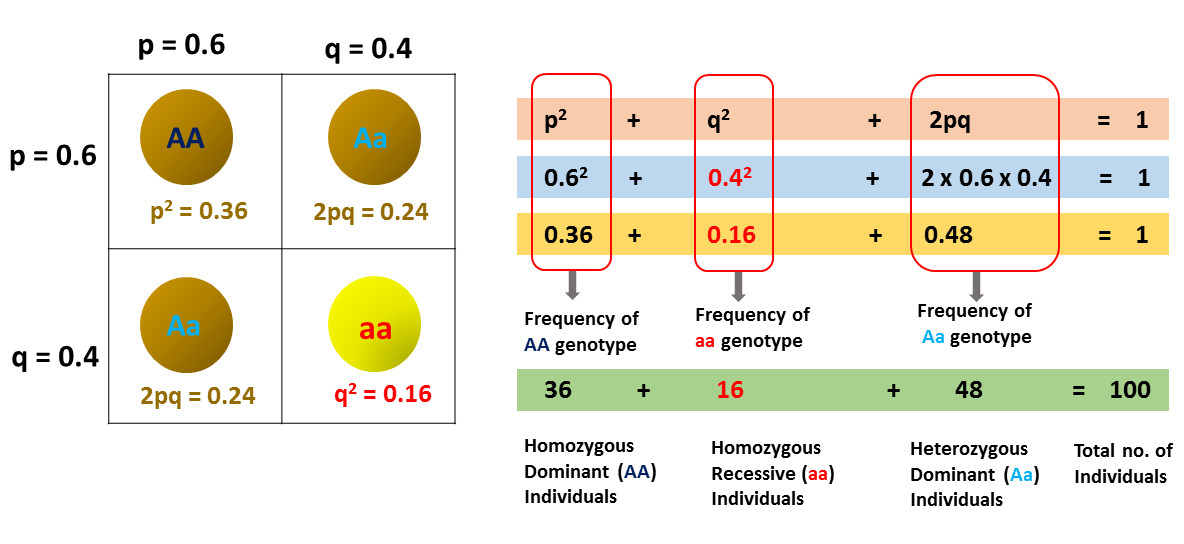If q = .4, what is the frequency of homozygous recessive individuals?
A. 0.4
B. 0.16
C. 2(.4)
D. (.4)
E. 0.6
Answer: B (0.16)
Explanation:
According to the Hardy-Weinberg principle, if q = 0.4, then we all know that p = 0.6, because p + q = 1.
[p (0.6) + q (0.4)] = 1
From the above question, if q represents the frequency of a homozygous recessive allele (a), then the frequency of homozygous recessive genotype (aa) will be q2 or (0.4)2 = 0.16. And, the frequency (p) of homozygous dominant genotype (AA) will be p2 or (0.6)2 = 0.36. While, the frequency (2pq) of heterozygous dominant genotype (Aa) will be 2pq or 2 × (0.6) × (0.4) = 0.48.
If there are 100 people, then the frequency of homozygous recessive (aa), homologous dominant (AA), and heterozygous dominant (Aa) organisms will be 16, 36, and 48 members, respectively.
Other important questions:
Q. The alpha-helix and beta-sheet are found at which level of protein organization?
Q. Which cytoskeletal proteins provide the structural support for microvilli?
Q. Which of these does not contain a structural protein?
Q. What level of protein structure is associated with the sequence of amino acids?
Q. Which of the following pertains to typhoid fever?
Q. Which of the following tests is an agglutination test for the bacterium causing typhoid fever?
Q. Which of the following have a significant influence on a material’s electrical resistivity?
Q. What are alleles? And an example.
Q. What is one difference between DNA replication of bacteria and eukaryotes?
Q. Which of the following genotypes is homozygous recessive?











